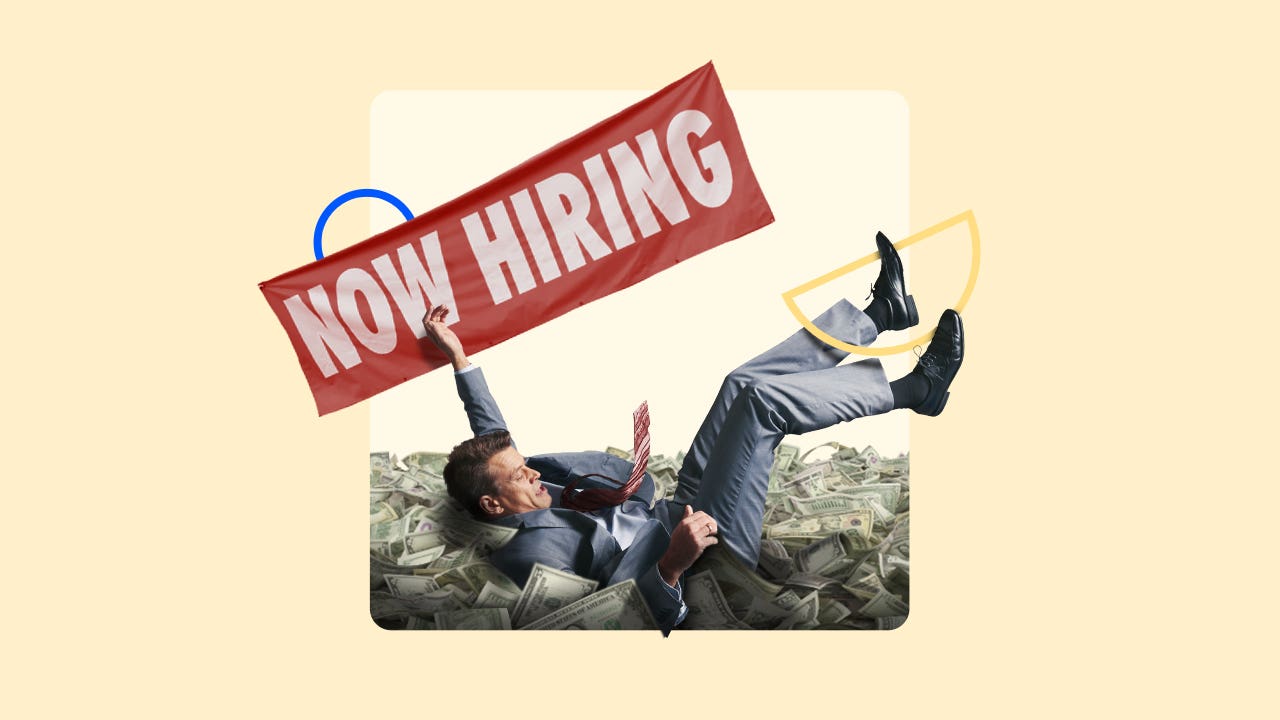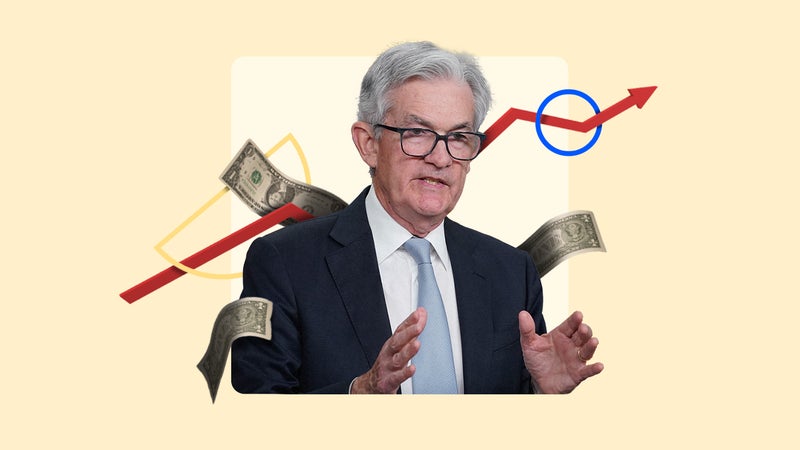Survey: Employers to create half as many jobs by March 2025, unemployment to top 4%

The Bankrate promise
At Bankrate we strive to help you make smarter financial decisions. While we adhere to strict , this post may contain references to products from our partners. Here's an explanation for .
Watching for a slowdown in the current U.S. labor market has been a bit like waiting for a delayed train to eventually leave the station: A departure is still on the schedule, but it keeps getting gradually pushed back, leaving its passengers puzzled and in suspense.
The job market has outperformed economists’ expectations for five straight quarters, but the nation’s top economists continue to expect a hiring slowdown, according to Bankrate’s latest quarterly economists’ poll. Experts are penciling in a 4.2 percent unemployment rate by the end of March 2025, up from its current 3.9 percent level, according to the average forecast. They’re also still projecting that employers will scale back on hiring. Between now and March 2025, job growth is expected to average 117,000 a month — half as fast as the previous 12 months.
Moving forward, Americans might not see a job market as red-hot as it was post-pandemic, but the lower the unemployment rate, the better. Back in the second quarter of 2023, economists thought unemployment would soar to 4.6 percent by March 2024.
An expanding job market helps ensure that the workers who do lose their jobs can find employment relatively quickly, making it easier to rely on their emergency funds to make ends meet over turning to credit card debt. Not to mention, resilient demand for more work can help ensure that Americans’ wages continue making up the ground that they lost to inflation.
It remains an opportune time to prioritize emergency savings to essentially self-insure since the unemployment rate is expected to edge up, albeit slightly, and hiring is forecast to slow significantly.— Mark Hamrick, Bankrate Senior Economic Analyst
Key insights on the economy from Bankrate’s Q1 2024 Economic Indicator poll
Hiring slowdown: Is it late to arrive or standing economists up?
Forecasts for the unemployment rate a year from now ranged from a high of 4.7 percent to a low of 3.8 percent — suggesting that one economist expects unemployment to fall, not rise, between now and March 2025.
But as for job creation, even the most upbeat of estimates signaled a hiring slowdown in the year ahead. Between March 2023 and February 2024, employers created 229,000 jobs on average. Yet, economists’ predictions for the average number of jobs created each month over the next year soared as high as 200,000 to as low as a loss of 10,000 positions.
“We do expect that an overall slowing of the economy this year will result in an increase in the unemployment rate, even if the slowdown is not a full-fledged recession,” says Mike Fratantoni, chief economist at the Mortgage Bankers Association, who penciled in a 4.5 percent unemployment rate and 75,000 average monthly job growth for the year ahead.
Without a doubt, job growth has already slowed. Employers created 4.5 million jobs in 2023 alone, the fastest pace in records dating back to the 1940s when excluding the massive post-lockdown bump in 2021. Job creation normalized back to about 3 million in 2023, but even that was a pace worth bragging about — a boom last seen in the 1990s, reserved for the most resilient of economies.
It was far from expected. Economists thought job growth would average 42,000 in the 12-month period ending in December 2023. It ended up hitting 251,000. Even going back to the fourth quarter of 2021, economists in Bankrate’s quarterly polls have been projecting a much faster slowdown in hiring than what ultimately came to fruition.
Still, Americans aren’t wrong to feel that the labor market isn’t as strong as it looks on paper. Job openings are highest for health care, as well as leisure and hospitality, while job creation within professional and business services slowed to just 149,000 in 2023 — the slowest year the industry has ever had when the broader economy isn’t in a recession.
A 4.2 percent unemployment rate, however, pales in comparison to the 14.7 percent rate during the coronavirus pandemic — and the 10 percent peak rate of the Great Recession.
“A slowing economy will cause hiring to decelerate but not a significant increase in the unemployment rate,” says Sean Snaith, director of the Institute for Economic Forecasting at the University of Central Florida’s College of Business. “The COVID labor market shortages are likely causing employers to think long and hard about letting staff go given the difficulties they faced hiring them in the first place.”
Here’s what the nation’s top economists are saying about the job market
The labor market is cooling down, yet at a much slower pace than expected given the influx of immigration, strong labor demand and policy tailwinds. We believe the market will come into a more balanced state in the second half of the year, easing wage inflation pressure.— Tuan Nguyen | Economist at RSM
Even as the economy slows and hiring slightly cools, the hunt for talent will continue. The reason is, labor markets are still tight, and as long as the prospect of recession in 2024 is low, companies are going to be reluctant to lay off workers.— Bernard Baumohl | Chief global economist at the Economic Outlook Group
The job market will moderate throughout 2024 as firms continue to throttle back hiring. The pace of labor force growth will also slow, making it more difficult to find qualified candidates.— Dante DeAntonio | Senior director of economic research at Moody's Analytics
-
The First-Quarter 2024 Bankrate Economic Indicator Survey of economists was conducted March 15-25. Survey requests were emailed to economists nationwide, and responses were submitted voluntarily online. Responding were: Mike Fratantoni, chief economist, Mortgage Bankers Association; Odeta Kushi, deputy chief economist, First American Financial Corporation; Nayantara Hensel, Ph.D., chief economist, Seaborne Defense; Gregory Daco, chief economist, EY; Scott Anderson, chief U.S. economist, BMO; Dante DeAntonio, senior director, Moody’s Analytics; Lawrence Yun, chief economist, National Association of Realtors; Bernard Markstein, president and chief economist, Markstein Advisors; Robert Frick, corporate economist, Navy Federal Credit Union; Bill Dunkelberg, chief economist, NFIB; Sean Snaith, director, Institute for Economic Forecasting, College of Business at the University of Central Florida; Mike Englund, chief economist, Action Economics; Tuan Nguyen, economist, RSM U.S.; Brian Coulton, chief economist, Fitch Ratings; Joel L. Naroff, president, Naroff Economics; John E. Silvia, founder, Dynamic Economic Strategy; and Bernard Baumohl, chief global economist, The Economic Outlook Group.

